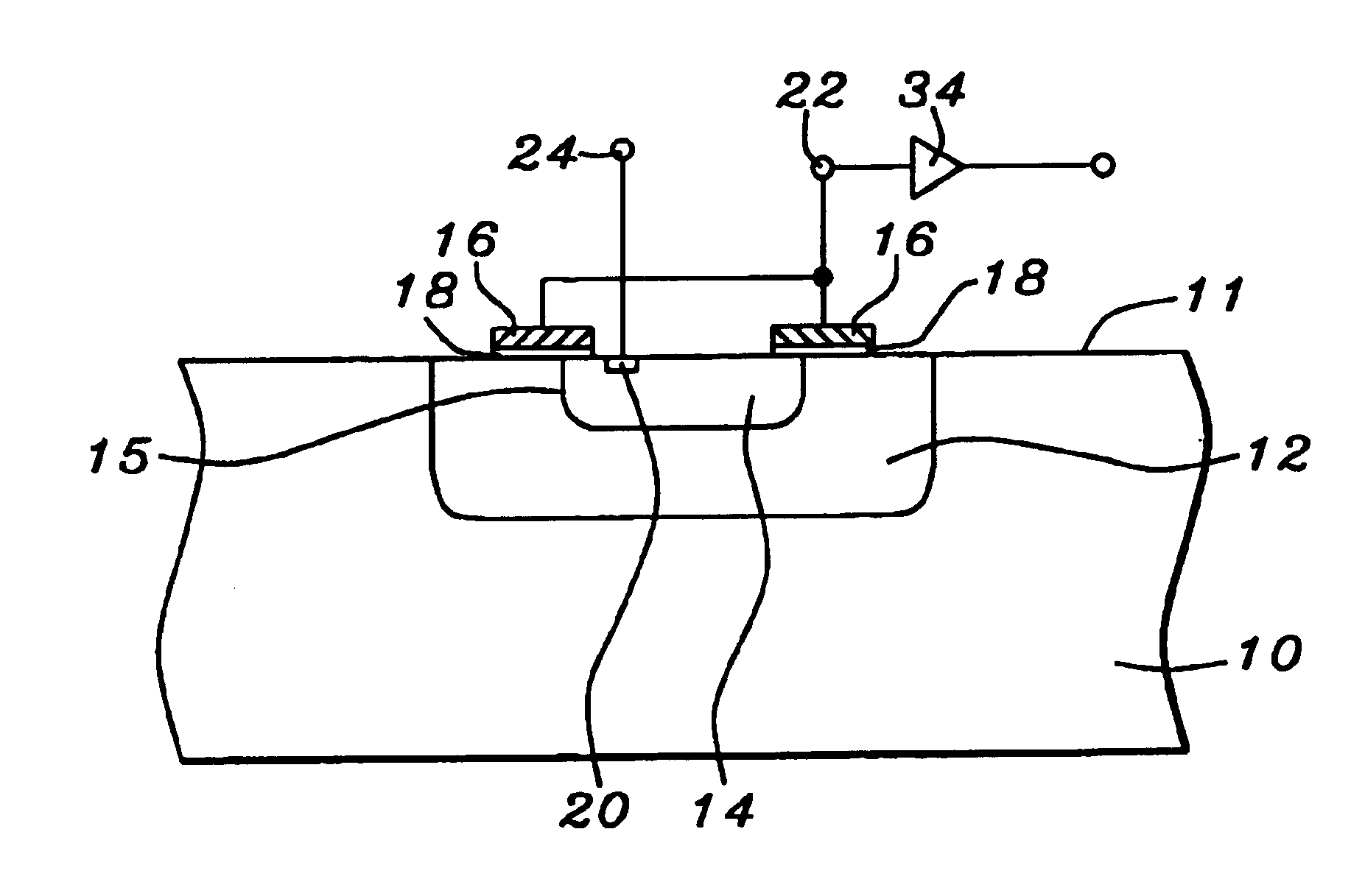Tunneling floating gate APS pixel
a technology of floating gate and aps pixel, which is applied in the direction of diodes, radiation controlled devices, semiconductor devices, etc., can solve the problems of tunneling currents and problems in the design of aps pixel in 0.13 micron processing
- Summary
- Abstract
- Description
- Claims
- Application Information
AI Technical Summary
Benefits of technology
Problems solved by technology
Method used
Image
Examples
Embodiment Construction
[0023]FIG. 1 shows a cross section view of an example of a floating gate pixel. An N well 12 is formed in a P type silicon substrate, usually a P type epitaxial silicon substrate. A P well 14 is formed in the N well 12. The only contact to the pixel structure is in the P well 14 and is shown as a single P+ type contact 20 in FIG. 1. This P+ type contact 20 allows the pixel to be reset and serves as a source / drain region. A gate oxide 18 is formed on the substrate and a gate electrode 16 is formed on the gate oxide 18. Although two sections of the gate electrode 16 are shown in FIG. 1 the two sections are part of a single gate electrode. The gate electrode has a closed shape such as a donut shape and is connected to an output terminal 22. The gate oxide 18 and the gate electrode 16 are directly over part of the P well 14, part of the N well 12, and the intersection of the PN junction 15 between the P well 14 and the N well 12 and the top surface 11 of the pixel. Altematively the gate...
PUM
 Login to View More
Login to View More Abstract
Description
Claims
Application Information
 Login to View More
Login to View More - R&D
- Intellectual Property
- Life Sciences
- Materials
- Tech Scout
- Unparalleled Data Quality
- Higher Quality Content
- 60% Fewer Hallucinations
Browse by: Latest US Patents, China's latest patents, Technical Efficacy Thesaurus, Application Domain, Technology Topic, Popular Technical Reports.
© 2025 PatSnap. All rights reserved.Legal|Privacy policy|Modern Slavery Act Transparency Statement|Sitemap|About US| Contact US: help@patsnap.com



